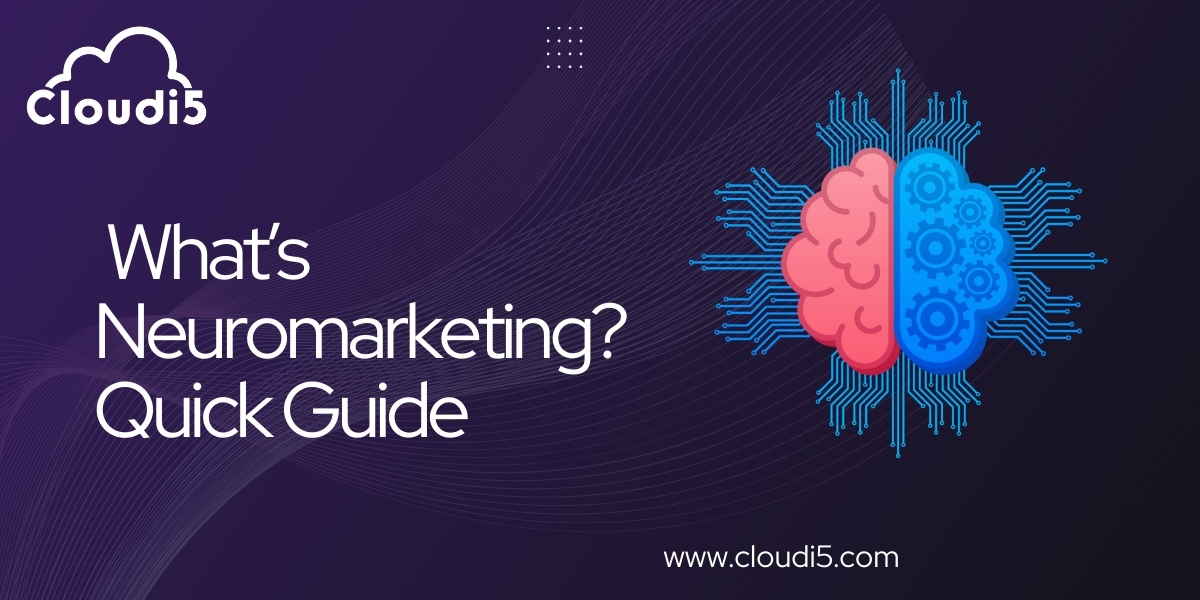
What Is Neuromarketing? A Quick Guide To Your Brain And Buying Stuff
Ever wondered why some ads stick in your head while others make you yawn? Or why you suddenly want a specific brand of chocolate chip cookies after seeing a commercial? The answer might just be found in the fascinating world of Neuromarketing.
What is Neuromarketing?
Neuromarketing is like a brain detective – it helps us see what's happening inside our heads when we look at a product or an ad. It's a mix of brain science and clever thinking that helps figure out how people decide what to buy.
Think of it this way: regular market research asks people questions, but Neuromarketing goes a step further. It looks at what our brains are doing without us even realizing it, showing the real reasons behind our choices.
Alright, let's take a step back. If the whole idea of Neuromarketing is a bit confusing, let's clear things up with a straightforward example.
Example: Imagine you're at the store to buy cereal. You see two kinds that seem pretty similar. One has a bright, happy package with pictures of families enjoying breakfast, and it talks about using local ingredients. The other just shows the cereal without any extra stuff.
Your brain might lean towards the first one without you even thinking too much.
Why?
Because the pictures and the story make you feel good about it. That's Neuromarketing in action – the way they make you feel can affect what you choose, even if the cereals are pretty much the same. It's like the cereal brands are talking to your feelings, not just your brain!
The Science Behind Neuromarketing
How Does Neuromarketing Works?
Neuromarketing employs various tools to measure brain activity and physiological responses, including:
Brain Imaging Techniques
1. Functional Magnetic Resonance Imaging (fMRI)
- fMRI tracks blood flow changes, giving real-time insights into brain activity.
- Pinpoints brain areas activated by specific stimuli, helping marketers understand emotions and thoughts.
2. Electroencephalography (EEG)
- Measures brain electrical activity with high time precision.
- Useful for tracking quick changes in brain activity, like immediate reactions to ads or product displays.
Eye-Tracking Technology
1. Gaze Tracking
- Monitors where people look, identifying attention-grabbing elements.
- Reveals the visual hierarchy of marketing materials, guiding optimal placement for maximum impact.
2. Pupil Dilation
- Reflects cognitive effort and emotional engagement.
- Gauges the intensity of consumer interest or arousal during decision-making.
Applying Neuromarketing Insights
Packaging and Design
1. Color Psychology
- Studies show certain colors evoke specific emotions and influence purchases.
- Businesses strategically use colors in packaging and branding for desired emotional responses.
2. Neuro-Designed Logos
- Crafting logos that trigger positive neural responses enhances brand recognition.
- Neuromarketing insights help create logos resonating with audiences on a subconscious level.
Advertising and Content Creation
1. Emotional Resonance
- Neuromarketing emphasizes emotional storytelling in ads.
- Understanding emotions that resonate with an audience helps create lasting impact.
2. Neuro-Copywriting
- Crafting messages triggering positive neural responses.
- Utilizing neurolinguistic programming enhances communication, driving desired consumer behaviors.
By analyzing this data, Neuromarketers can gain profound insights into the factors that influence consumer behavior. This information is then utilized to create more impactful marketing campaigns, develop products with higher chances of success, and enhance the overall customer experience.
Benefits of Neuromarketing
- Better Ads: Neuromarketing helps create ads that connect with our feelings, making us remember them more.
- Awesome Products: By knowing what we like, companies can make products we'll really enjoy.
- Happier Customers: Neuromarketing helps make shopping more fun by giving us what we want.
Ethical Stuff
But hold on, using Neuromarketing comes with some rules:
- Tell Us: Companies should let us know when they're using Neuromarketing tricks.
- Keep Secrets: Our brain info should be kept safe and used the right way.
- No Tricks: Neuromarketing shouldn't be used to fool or push us into buying stuff we don't want.
Future Trends in Neuromarketing
Understanding Emotions Better:
Future Neuromarketing will go beyond just knowing if you're happy or sad. It will use new techniques to understand specific feelings like excitement, joy, or frustration. This will help create ads and messages that match exactly how you feel.
Blending Biometrics:
Neuromarketing will combine traditional tools with things like heart rate and skin responses. Imagine ads changing in real-time based on how you're feeling, creating a more immersive experience.
Combining Real and Virtual:
Virtual and Augmented Reality will be a big part of Neuromarketing. Brands might test ideas in virtual spaces to see how you react, or use VR to create experiences that feel personal and hit deep desires.
Neurogaming for Research:
Games will be used for studying what you like and don't like. Imagine playing a game while researchers watch your brain to learn more about your preferences and motivations.
Ethics at the Forefront:
As Neuromarketing gets better, it's important to be fair. This means being clear about what's happening and getting your okay. There should be rules to make sure no one tricks you. Keeping your trust and making sure Neuromarketing is a good thing will be really important.
In the future, Neuromarketing will be like exploring how people think. Ads might be super personalized, and we could even try out cool things in virtual reality. But, it's crucial to do this in a fair and good way. We want Neuromarketing to help us, not trick us in our busy minds. Being responsible and doing things ethically is the key to making sure Neuromarketing is a positive force in our ever-changing thoughts.
Conclusion
Neuromarketing is still new, but it's growing fast. As technology gets even better, we might see more and more companies using it to understand us better.
So, next time an ad catches your eye or makes you crave something, remember that Neuromarketing might be the wizard behind the curtain, helping companies understand how to make things you'll love. It's like a cool journey into the future of shopping, where science and fun come together in a super interesting way!
And guess what? If you want more brainy stuff, check out Cloudi5 Blog. Need super advertising? Visit Cloudi5 Technologies, your go-to for the best digital marketing agency in Coimbatore, for futuristic ads. Happy reading and shopping! Top of Form
Well done! You've reached the end of this blog. If an ad ever makes you want something you don't really need, just remember – you're not crazy, you're just human. Take a breath, and let the marketing magic do its thing!
Trusted By












Leave Comments